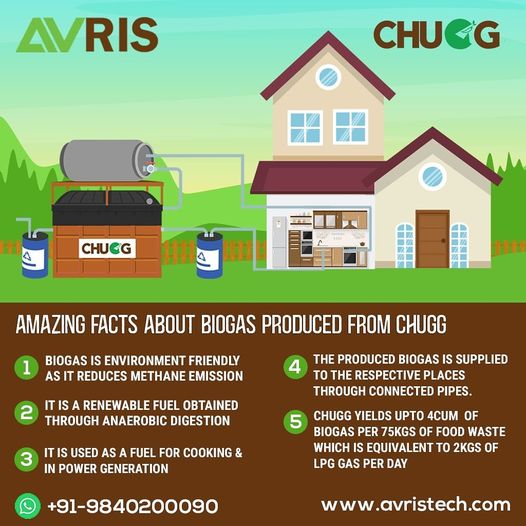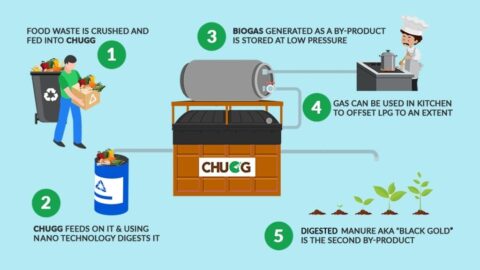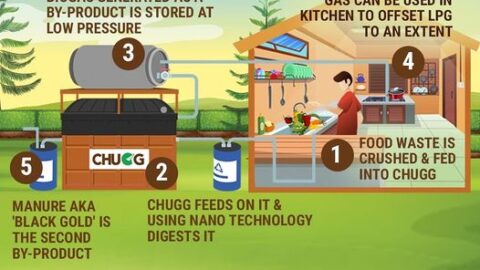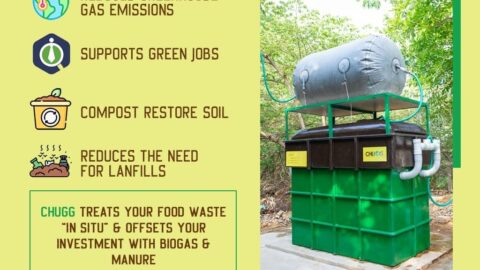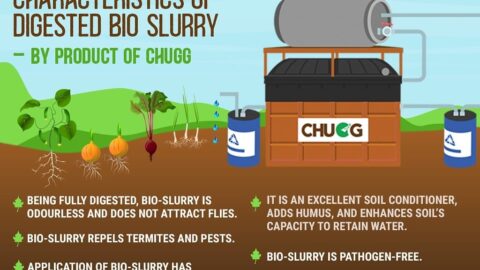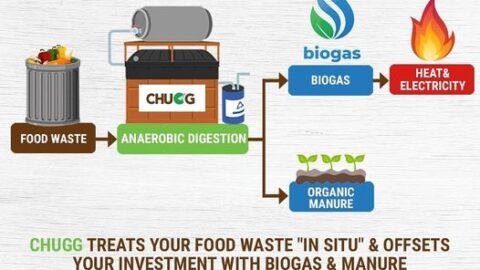The production and utilization of renewable natural gas or Biogas produced using organic waste are growing rapidly all around the world. It is one of the world’s most remarkable energy assets. Biogas is a hydrocarbon gas mixture- a fuel that can be utilized for cooking, heating, and electricity. It’s sustainable energy that can help diminish greenhouse gas emissions into the atmosphere.
Biogas is a combination of various compounds such as methane, chains of carbon, hydrocarbons, and hydrogen atoms. It is produced after the decomposition of organic matter in the absence of oxygen. This Biogas is significant energy in many different parts of the world and rural areas. Biogas plays a major role in accomplishing a cleaner and greener economy, reducing greenhouse gas emissions, creating sustainable job opportunities, and increasing the diversity of the energy supply portfolio. At its maximum potential, biogas could be the most dependable and the savviest, environmentally friendly power source
What is renewable natural gas?
Renewable Natural Gas (RNG) is the term that is used for pipeline-quality bio-methane derived from biomass. It is derived from natural waste material found in day-by-day life, for example, food waste, and garden and grass clippings, also animal and plant-based material. The availability of these materials allows for the production of generous amounts of biogas. It is tradable with gaseous petrol. It is a carbon-neutral, fully compatible, and versatile natural gas that can be utilized in homes and organizations for power creation, cooking, and as an effective fuel for transportation.
Let’s check out these 8 amazing facts about Biogas that you probably won’t know.
Sources of Biogas
Common sources of biogas include landfills, animal manure, food scraps, and wastewater sludge. Bacteria break down these organic waste matter to produce methane, carbon dioxide, and other gases and solids through a cycle alluded to as anaerobic digestion. Landfills account for more biogas production whereas only a few landfills collect methane through methane collection mechanism for energy. Food waste, kitchen scraps, and garden waste are becoming growing sources of renewable natural gas. These wastes are diverted to landfills which decompose there in the absence of oxygen to emit methane- a potent greenhouse gas compared to carbon dioxide.
Food waste management in India is becoming the biggest threat, not only do many people starve without food it also depletes our ozone layer resulting in Global warming. Reducing food waste is possible but eliminating it is difficult. Therefore instead of diverting your food waste, kitchen scraps, and garden trimmings to landfills feed it to CHUGG- an innovative food waste treatment system in India that treats your waste at source thereby eliminating the emission of methane.
Impacts of biogas on climate change
Biogas is most often used to produce heat/electricity. Given its compatibility with LPG biogas can be used in a wide array of applications. In its most pure form, Biogas can be used as transportation fuel particularly as a substitute for diesel. Its potential as a heating source in existing applications is one of the major reasons for developing interest in Biogas production lately.
CHUGG- an innovative food waste treatment system developed in India delivers 4 cum of biogas per 75 kgs of food waste which is equal to 2kgs LPG gas per day. Generating biogas through waste matter is a sustainable way of displacing fossil fuel use. CHUGG eliminates Greenhouse gas emissions that otherwise would occur under typical waste management practices.
Biogas contributes to a greener environment
As the production and utilization of natural gas have developed, so too have worries about whether it has significant environmental and climate benefits. Biogas is essentially made out of methane, which emits carbon dioxide when used as fuel. The emission of this carbon is regularly counterbalanced by different advantages as depicted previously. Nonetheless, because methane itself is an ozone-harming substance 84-86 times more remarkable than carbon for almost 20 years in the atmosphere.
CHUGG-an innovative food waste treatment system in India produces biogas by curbing the emission of methane inside the chamber itself. Here we list out few points on how Biogas produced from CHUGG- food waste treatment system contribute to a greener environment
- The Biogas produced from CHUGG capture methane emissions that otherwise would have been emitted into the atmosphere.
- Biogas production solves food waste management in India as CHUGG complies with municipal and SWM rules.
- CHUGG produces two by-products namely biogas which can be used for cooking/electricity and organic manure which enhances the soil’s fertility.
- This unit reduces the use of LPG and a cost-effective solution for food waste treatment that offsets your investment with Biogas and BioSlurry.
Biogas is odorless
Biogas is mostly made up of Methane hence it is odorless. Apart from being odorless, Biogas is also colorless and tasteless. Utilizing it for your household needs is an ideal way to control your power and energy costs. CHUGG- food waste treatment system will not only help you save energy but also help protect the environment by eliminating greenhouse gas emissions.
Biogas replaces fossil fuel
Biogas is one of the cleanest renewable energy that replaces the use of fossil fuels to a greater extent. Compared to burning fossil fuels such as coal Biogas production and utilization eliminates the emission of methane and produces power. In this way, Biogas can be a better solution for the environment and the climate.
The utilization of Biogas as an energy source in households and for power generation can provide a cleaner alternative from other fossil fuels like coal. It can create less carbon and other harmful synthetics that can be ideal for the climate and public wellbeing. Utilizing it can likewise improve the local air quality.
It is the best among the renewable energies
Biogas is an adaptable and reliable energy asset. As sustainable power resources keep on developing as a proficient power source, no big surprise it tends to be a solid complement to renewables that can give sufficient power source to your home.
Biogas is an extraordinary power source on demand. Biogas is a new approach to save more energy bills while reducing carbon emission considerably into the atmosphere.
Biogas reduces your bills
Utilizing Biogas as an alternative energy solution can help you save cash from your energy bills. It is a cleaner fuel that prompts less propane, electricity, and LPG utilization in your home. CHUGG the Biogas unit can likewise be more energy effective than various other models, so it saves you more money.
Biogas is environmentally friendly
The use of Biogas in your home, schools, and organization for power and heat generation can reduce your carbon footprint significantly. It is a renewable source of smart energy that is cleaner and efficient compared to other renewable power resources. It can likewise, ideal for overhauling your home with exceptionally efficient Biogas compatible appliances to help eliminate greenhouse gas emissions while lessening your energy bills at the same time.
Final verdict:
Biogas can be a bridge fuel to a renewable future. Biogas produced from organic waste matters are sustainable sources of energy that can be a revolutionary upgrade to your homes, organizations, and even to our planet. It’s likewise an abundant resource to help eliminate your carbon footprint and other greenhouse gases that are harmful to the environment. It shows the huge advantages of utilizing Biogas in the environment that can help conserve and save the Earth.

